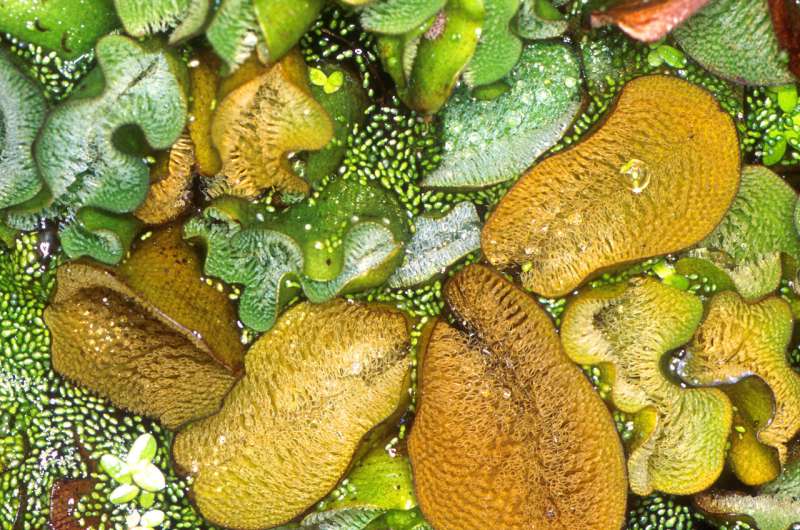Fungus fights oxygen-sucking water weed

In parts of the South, there are stories about an invasive floating weed, which forms such a dense mass that it enables small animals to walk across water.
This weed, called giant salvinia, is an exotic fern from South America that invades ponds, lakes, and other waterways in the United States. It damages aquatic ecosystems by outgrowing and replacing native plants that provide food and habitat for native animals and waterfowl.
Agricultural Research Service (ARS) scientists are testing a naturally occurring fungus (Myrothecium spp.) against giant salvinia to help control it. Initial tests have found that the fungus stops this problematic weed from growing and even can kill it.
"In some aquatic environments, salvinia is like kudzu," says Mark Weaver, a plant pathologist at ARS's Biological Control of Pests Research Unit (BCPRU) in Stoneville, Mississippi. "You look at it and just marvel, wondering "Wow, how did that happen?" It completely upends this ecosystem."
Giant salvinia can produce a tremendous amount of biomass, portions of which die, sink to the bottom of lakes and ponds, and rot. "It basically sucks all the oxygen out of the bottom of that pond or lake," Weaver says.
Other biocontrol methods involve releasing weevils to control the weed. The weevils have worked well but only in the southern parts of the United States, Weaver says. They were less effective farther north where water temperatures are cooler.
"We wanted to know what could be done about lakes in the north or if we could use something in addition to these weevils," Weaver says. "That is why we looked at the Myrothecium fungus."
Weaver collaborated with Judy Shearer, a retired U.S. Army Corps of Engineers Research and Development Center researcher, who tested the fungus's efficacy. Also involved in the research were BCPRU research leader Michael Grodowitz, who has a background in native aquatic vegetation and biocontrol in aquatic systems, and Clyde Doug Boyette, a BCPRU plant pathologist, who worked on a different species of Myrothecium.
In experiments, Weaver simulated mini ponds in 50-gallon barrels, filled with water, where he grew salvinia. The barrels were left outside, exposed to a natural environment. He then applied the fungus Myrothecium. In some treatments, the fungus reduced giant salvinia's biomass by up to 70 percent.
"Salvinia has a tremendous growth rate," Weaver says. "Even if you don't kill the salvinia, if you can stop the growth, that's a win. Myrothecium killed some of the plant, but more importantly, it halted the growth."
Myrothecium is a natural occurring fungus that can be isolated from soil in the southeastern United States. Occasionally, the fungus is found on other aquatic weeds, Weaver says, "so, we don't feel like we're putting something alien out into the environment. But if you're going to mass produce it and apply it on a large scale, there are some safety issues that you need to work out." For example, Weaver notes that safety tests—toxicity level analyses—need to be conducted before the fungus can be tested against weeds in ponds or lakes.
Provided by United States Department of Agriculture














